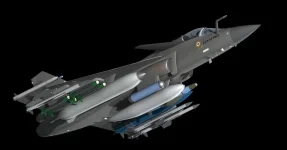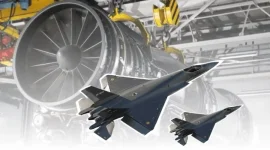- Views: 6K
- Replies: 16
At the recent IDEAS 2024 defence exhibition, the Pakistan Air Force (PAF) revealed its ambitious PFX (Pakistan Fighter Program) to develop an indigenous 4.5+ generation fighter jet.
This initiative aims to boost Pakistan's air combat capabilities and reduce its reliance on imported platforms, potentially positioning the PFX as a rival to India's Tejas Mk2.
The PFX is envisioned as a twin-engine fighter with advanced features like canards for enhanced maneuverability and an AESA radar. PAF officials claim it will surpass the JF-17, their current mainstay fighter co-developed with China. They suggest the first PFX prototype could fly within 4-5 years.
However, the ambitious PFX program faces skepticism due to the perceived shortcomings of the JF-17. Critics argue that the JF-17, despite being touted as a success, has failed to live up to expectations, with limited export success and persistent questions about its capabilities. This casts doubt on Pakistan's ability to independently develop a more advanced fighter jet like the PFX.
Despite these doubts, the PFX program highlights Pakistan's determination to modernize its air force. With its aging fleet of Mirage-III/V and F-16s, Pakistan is seeking a capable multi-role fighter to bridge the gap before the anticipated arrival of the fifth-generation J-35A from China.
The PFX program is driven by several key factors:
- Reducing reliance on imports: Developing an indigenous fighter reduces dependence on foreign suppliers and strengthens Pakistan's domestic defence industry.
- Enhancing air combat capabilities: The PFX aims to significantly upgrade Pakistan's air power compared to the JF-17.
- Technological advancement: The PFX program fosters technological expertise in aerospace engineering within Pakistan.
- Strategic deterrence: A modern, domestically produced fighter jet enhances Pakistan's regional strategic deterrence.


